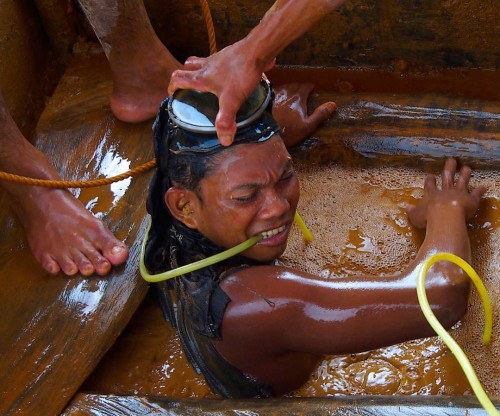Child Labor Coalition joins calls for cleaner, more responsible jewelry supply chain
Contact: Reid Maki, Child Labor Coalition, (202) 207-2820, reidm@nclnet.org
Washington, DC–The Child Labor Coalition (CLC) today joins nearly 30 NGOs and trade unions from around the world in calling on the jewelry industry to ensure responsible sourcing of precious metals and gems. One million children toil in mines, often extracting metals, including gold and silver, and gems like jade, emeralds, and diamonds. The work is extremely hazardous, putting children at risk of serious injury and death. Many child miners use toxic substances such as mercury that can cause severe damage to their developing neurological systems. Mining also causes profound ecological damage in many communities, polluting waterways and soil and endangering the health of communities.
“Consumers purchase nearly $300 billion in jewelry each year,” said Sally Greenberg, executive director of the National Consumers League (NCL) and co-chair of the CLC, whose 38 member organizations have worked to reduce child labor around the world for nearly three decades. “It’s time for jewelry companies to do more to provide consumers with jewelry that isn’t tainted with the scourges of child labor and forced labor. Existing mechanisms to clean up this supply chain have not gone far enough. It’s time for greater transparency. Jewelry companies must take responsibility for their supply chains.”
“The prevalence of child labor in the jewelry supply chains is a major concern,” said Reid Maki, NCL’s director of child labor advocacy and coordinator of the CLC. According to the U.S. Department of Labor, child labor is found in gold mining in 21 countries. Child labor is also used to produce silver in Bolivia, rubies and jade in Burma, and diamonds in six African countries. In the Philippines, children do compression mining of gold, submerged under muddy water while they breathe air through flimsy plastic hoses.

A young miner surfaces after spending an hour at the bottom of a compressor mine in the Philippines. Image by Larry C. Price, 2012.
Today, the NGOs and trade unions are issuing a Call to Action to the jewelry industry calling on companies to:
- Put in place and implement a robust supply chain due diligence policy;
- Ensure full chain of custody over gold and diamonds by requiring evidence of business transactions and their transport routes from their suppliers;
- Assess and respond to human rights risks throughout their supply chains, and ensuring that workers have a right to unionize and access to effective remedy;
- Use independent third-party audits;
- Publicly report on their human rights due diligence on an annual basis;
- Publish the names of gold and diamond suppliers and their independent third-party audit mechanisms;
- Actively seek gold and diamonds from artisanal and small-scale mines that are not associated with human rights violations and willing to formalize;
- Improve human rights conditions in artisanal and small-scale mining communities;
- Support multi-stakeholder initiatives designed to strengthen responsible minerals sourcing and work with mining cooperatives and trade unions.*
“Through this ‘Call to Action’ and the accompanying campaign, we hope to see real engagement and transformation of the jewelry industry,” said Judy Gearhart, executive director of the International Labor Rights Forum and chair of the CLC’s International Issues Committee.
The CLC also applauds Human Rights Watch’s new report, “The Hidden Cost of Jewelry: Human Rights in Supply Chains and the Responsibility of Jewelry Companies,” which examines the sourcing of gold and diamonds by 13 major jewelry and watch brands that generate more than $30 billion in annual revenue in the United States.
*The campaign action steps are spelled out in greater detail by Human Rights Watch on its web site.
About the Child Labor Coalition
The Child Labor Coalition, which has 38 member organizations, represents consumers, labor unions, educators, human rights and labor rights groups, child advocacy groups, and religious and women’s groups. It was established in 1989, and is co-chaired by the National Consumers League and the American Federation of Teachers. Its mission is to protect working youth and to promote legislation, programs, and initiatives to end child labor exploitation in the United States and abroad. The CLC’s website and membership list can be found at StopChildLabor.org.

